Results
-
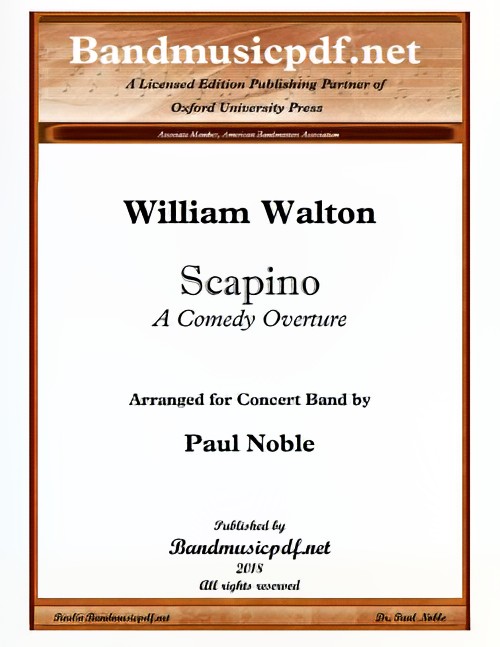 £395.00
£395.00Scapino (A Comedy Overture) (Concert Band - Score and Parts) - Walton, William - Noble, Paul
William Walton's Scapino: A Comedy Overture took as its inspiration the three-act comedy of intrigue Scapin the Schemer (French: Les Fourberies de Scapin) by the French playwright Moli?re. The title character Scapin is similar to the archetypical Scapino character. His name is related to the Italian word "scappare" (to escape) and his name translates to "little escape artist" in reference to his tendency to flee from fights, even those he himself begins. The play was first staged on 24 May 1671 in the theatre of the Palais-Royal in Paris. Scapino tends to make a confusion of anything he undertakes and metaphorically "flees" from one thought, activity or love interest to another, as his name implies, although he usually will return to it - eventually. Self-preservation and self-interest are his main concerns. This is not to say his wits are without merit. He is a schemer and scoundrel, and takes a certain pride in these facts. He was originally a masked character, although later versions usually have the actor simply powder his face. He is traditionally shown with a hooked nose and a pointed beard. Scapino was composed on commission from Frederick Stock and the Chicago Symphony on the occasion of the group's 50th anniversary, and received its world premiere by that ensemble, conducted by Stock, in 1941. This faithful arrangement is sure to find its way into the serious repertoire of outstanding Concert/Wind Bands worldwide.
Estimated dispatch 7-14 working days
-
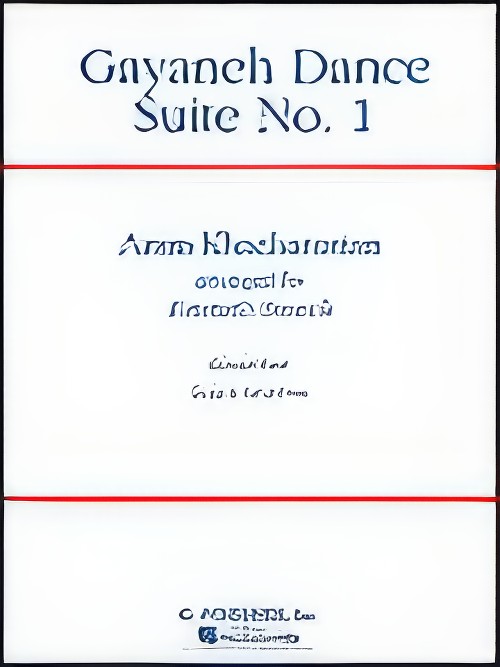 £95.00
£95.00Gayenah Dance Suite No.1 (Concert Band - Score and Parts) - Khachaturian, Aram - Snoeck, Kenneth
Selected from the ballet Gayaneh, these three colorful examples of Aram Khachaturian's writing for ballet are based on rhythms and melodic motives from different ethnic groups, ranging from the very Slavic Ukranian "Gopak" (Hopak) to the Armenian "Dance of the Maidens" and the Kurdish "Mountaineers' Dance." They vary in instrumental color and tension from festive and party-like, through sultry and romantic, to tense and almost angry. These may be performed in any combination - a single stand-alone dance movement, a contrasting pair, or all three in a complete set. A culturally rich and unique experience for players and audience alike. Duration: 7:45
Estimated dispatch 7-14 working days
-
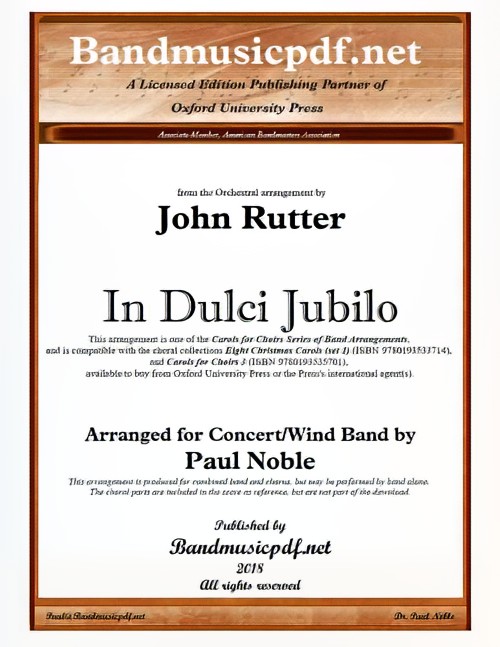 £75.00
£75.00In Dulci Jubilo (Concert Band with Optional Choir - Score and Parts) - Noble & Rutter
One night in 1328, the German mystic and Dominican monk Henrich Suso (or Seuse) had a vision in which he joined angels dancing as the angels sang to him Nun singet und seid froh or In Dulci Jubilo. In Suso's biography (or perhaps autobiography), it was written: Now this same angel came up to the Servant [Suso] brightly, and said that God had sent him down to him, to bring him heavenly joys amid his sufferings; adding that he must cast off all his sorrows from his mind and bear them company, and that he must also dance with them in heavenly fashion. Then they drew the Servant by the hand into the dance, and the youth began a joyous song about the infant Jesus, which runs thus: 'In dulci jubilo', etc. In Dulci Jubilo is among the oldest and most famous of the macaronic songs, one which combines Latin and a vernacular language such as English or German. Five hundred years later, this carol became the inspiration for the 1853 English paraphrase by John Mason Neale, Good Christian Men, Rejoice. Perhaps the earliest English version appeared c.1540. That popularity has endured for nearly 700 years. It's the rare contemporary collection of Christmas carols that doesn't contain a carol based on this ancient jewel.
Estimated dispatch 7-14 working days
-
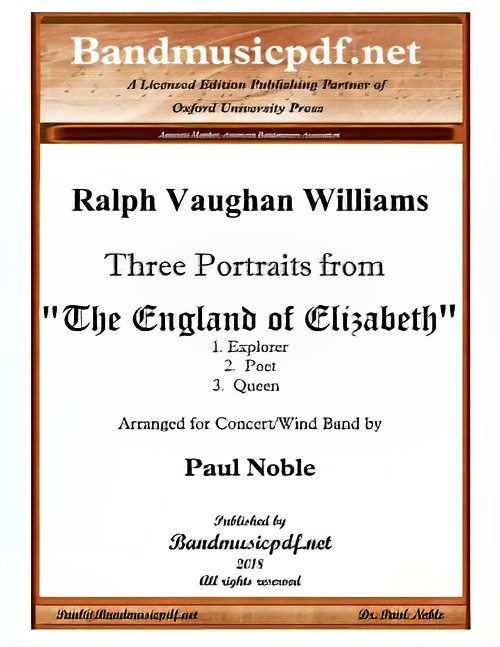 £250.00
£250.00The England of Elizabeth,Three Portraits from (Concert Band - Score and Parts) - Williams, Vaughan - Noble, Paul
This suite was derived from Vaughan Williams' score for the film, The England of Elizabeth, written in 1955. It was the composer's tenth of his 11 cinematic efforts and designed to serve a more descriptive role than other such scores, since the movie was a documentary featuring no action scenes, but lots of images of paintings, buildings, and the like. Composer Muir Matheson adapted this three-movement suite, probably shortly after the composer's death in 1958, though publication of the manuscript would not come until 1964. The first movement is entitled Explorer, and refers to Sir Francis Drake. Its music is mostly festive and colourful, but features interior passages of exotic flavor, similar in style to that of Vaughan Williams' then-recent Symphony No.8. The second movement is entitled Poet and, at about seven minutes, is the longest of the three in this 16 to 17 minute work. It also contains probably the score's best music, hardly a surprising result since the poet in question is Shakespeare, one of the composer's favourites and an inspirational springboard for so many other of his works. The mood is mostly subdued and Vaughan Williams presents lovely, if slightly somber music in the opening, and follows it with a hearty, folk-like dance tune. The latter part of this movement depicts Shakespeare as a noble, heroic figure in English history. The last movement, Queen, is devoted to Queen Elizabeth. It has a regal yet muscular manner at the outset, and features a gentle but somewhat disengaged middle section. It returns to the splendor and colour of the opening to close the work. This suite is important because it distills some of the best music from the film into a logically assembled structure. Program notes extracted from those of Robert Cummings.
Estimated dispatch 7-14 working days
-
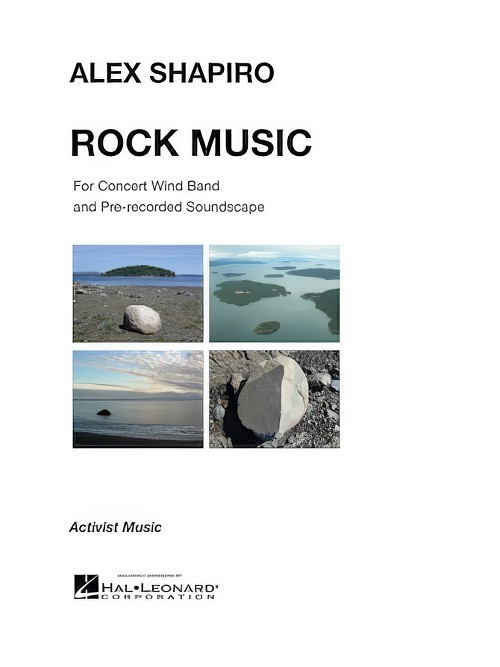 £76.99
£76.99Rock Music (Concert Band - Score and Parts) - Shapiro, Alex
For Concert Wind Band and Pre-Recorded Soundscapes.Alex Shapiro first brought electroacoustic music - paired with using an everyday object as an instrument - to middle school bands with her 2010 piece, PAPER CUT. Now comes ROCK MUSIC, possibly the very first geo-electroacoustic minimalist band piece, largely devoid of melody, and of rhythm. Conceptual and atmospheric, the music features compelling textures from instruments, voices, and rocks that weave a wind band into a piece of sonic fabric stretched across linear time. As the notes slowly crawl, melt, and scrape over a sonic landscape in random, irregular ways, we're connected to the ancient glaciers which carved the world we know, and which we strive to protect. Like PAPER CUT, ROCK MUSIC can be equally appreciated by mature bands and their audiences, as well. To perform ROCK MUSIC, you'll need an audio system capable of playing the prerecorded audio tracks from a laptop computer via a small digital audio interface connected to an audio mixer. Download information is provided in the printed piece.Duration: 4:15
Estimated dispatch 7-14 working days
-
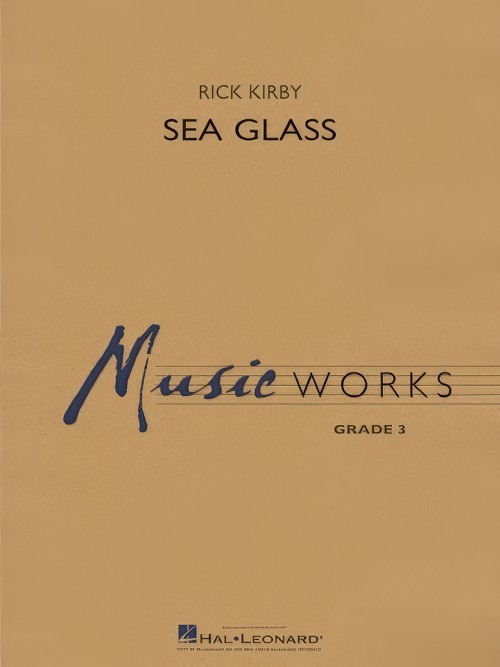 £60.99
£60.99Sea Glass (Concert Band - Score and Parts) - Kirby, Rick
Worn by the waves and recycled by the ocean, sea glass is a product of both nature and man. Bottles and jars carelessly discarded are tumbled by sea and sand, magically creating colourful and smoothly polished gems. This lovely descriptive work uses shimmering effects in piano and percussion combined with beautiful melodies and lush harmonies. With effective emotional peaks and a nice variety in textures, this is a rewarding work for band.Duration: 3:45
Estimated dispatch 7-14 working days
-
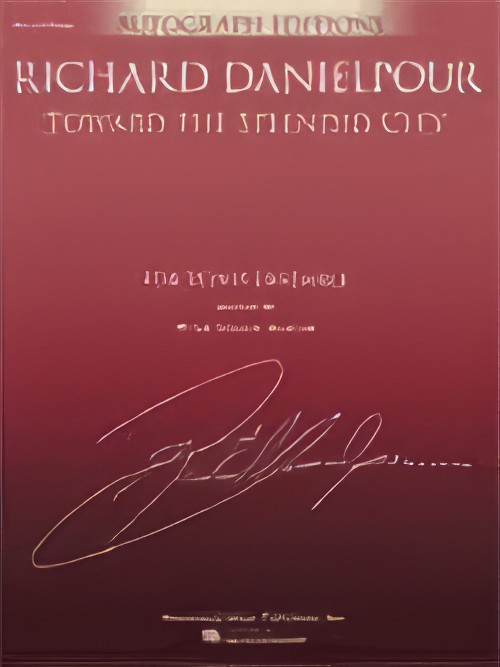 £145.00
£145.00Toward the Splendid City (Concert Band - Score and Parts) - Danielpour, Richard - Martin, Peter Stanley
Originally commissioned by the New York Philharmonic and written as a love letter in music to all of New York City's "wonderful and terrible things", Danielpour and Martin's collaboration brings Toward the Splendid City - an 8-minute wild ride of musical imagery of NYC's skyline, bridges and tunnels, bawdy and brash nightlife and more - to the wind band medium. Brassy bursts of color and surges of notes are abundant in a musical tribute to the vitality of this dynamic city.
Estimated dispatch 7-14 working days
-
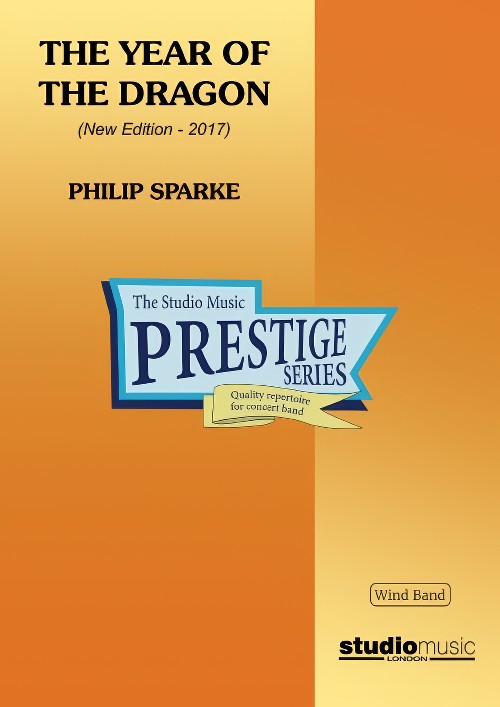 £199.95
£199.95The Year of the Dragon (Prestige Concert Band - Score and Parts) - Sparke, Philip
The 2017 version of The Year of the Dragon was commissioned by the Siena Wind Orchestra and given its world premiere on June 17th 2017 in Bunkyo Civic Hall, Tokyo, conducted by the composer.The original wind band arrangement of The Year of the Dragon was made in 1985, a year after the composer wrote the brass band version. At that time he was still learning the intricacies of writing for wind band (and still is!) and in the 32 years which have elapsed since then, his approach to scoring for the medium has developed and, hopefully, improved.Here are the main differences between the two versions:In the 1980's, the wind band movement was much less international than it is now. British wind bands were still to some extent based on the military band tradition of the time, which tended to use rather smaller instrumentation than the then-dominant American university model. The new version embraces a much more international instrumentation, including low woodwinds and string bass, as well as an expanded percussion section.In the original version there was a touch of naivety in the way the composer wrote for the woodwinds; much of their articulation was transferred too literally from the brass version, resulting in some unidiomatic writing, which he has tried to improve in the new version.In addition to the above, Philip's own compositional style has matured and developed in the intervening 32 years. There are some passages in the original which he simply would not write today - not because they are 'wrong', but because his way of writing has changed. The new version is perhaps how he would have written it today, rather than simply dressing the original version in new clothes.The work is in three movements:Toccata opens with an arresting side drum figure and snatches of themes from various sections of the band, which try to develop until a broad and powerful theme from the middle of the band asserts itself. A central dance-like section soon gives way to the return of this theme, which subsides until faint echoes of the opening material fade to a close.Interlude takes the form of a sad and languid solo for alto saxophone. A chorale for the whole band introduces a brief spell of optimism but the saxophone solo returns to close the movement quietly.Finale is a real tour-de-force for the band with a stream of rapid semi-quavers running throughout the movement. The main theme is heroic and march-like but this is interspersed with lighter, more playful episodes. A distant fanfare to the sound of bells is introduced and this eventually returns to bring the work to a stirring close.
Estimated dispatch 7-14 working days
-
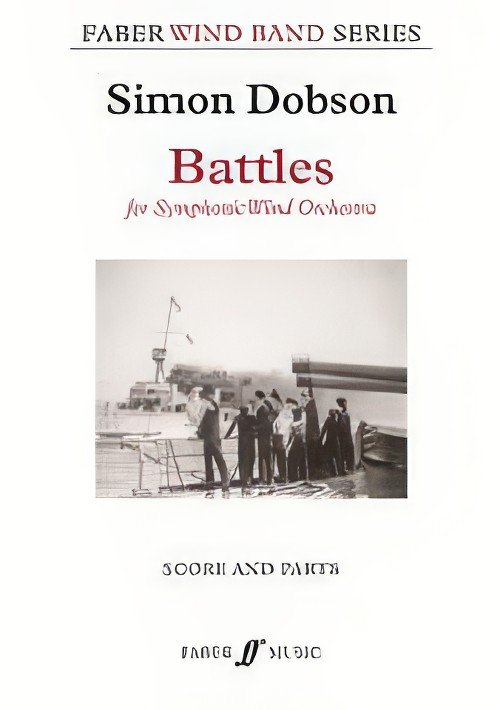 £100.00
£100.00Battles (Concert Band - Score and Parts) - Dobson, Simon
Battles was written for the restoration of the epic 1927 silent film The Battles of Coronel and Falkland Islands, and was commissioned by the British Film Institute (BFI) in 2013. The work presents eight contrasting scenes as a continuous sequence: War, Introduction of Admiral von Spee, German Banquet, Building Steam/Preparing, Islanders, Call to Arms, Great Battle at Sea and Victory. The original score was written for a small chamber orchestra, symphonic brass and a substantial batterie of tuned and untuned percussion. Battles has been edited for symphonic wind orchestra with percussion and harp. Composer Simon Dobson says of his colourful score, "I wanted to keep things simple and clear, so there is a British theme, a fanfare march idea, often heard on trumpet, and a German naval theme, which is a more angular motif." Duration: 13.00
Estimated dispatch 7-14 working days
-
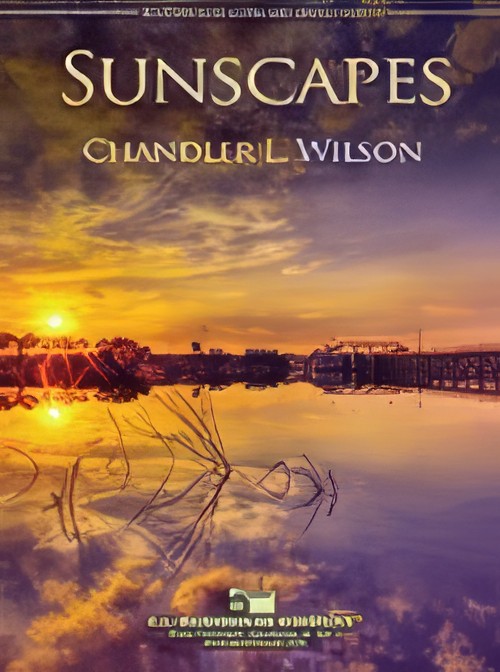 £84.00
£84.00Sunscapes (Concert Band - Score and Parts) - Wilson, Chandler L.
This exciting work depicts the lively and sunny nature of the state of Florida. Opening with a brilliant and majestic section highlighting the state's bright and vibrant culture, a flowing melody follows, representing the calming winds and consistent breeze of the state. Dance is a large part of Florida's culture, especially in its southern region, and the 7/8 rhythm captures an Afro-Latin style dance movement. The chorale/hymn section is based on the "Florida Song," which is a traditional school song of many schools, including Florida A&M in Tallahassee. The work then recapitulates and moves toward a driving and joyful conclusion. An excellent contest/festival work! Duration: 4.45
Estimated dispatch 7-14 working days
